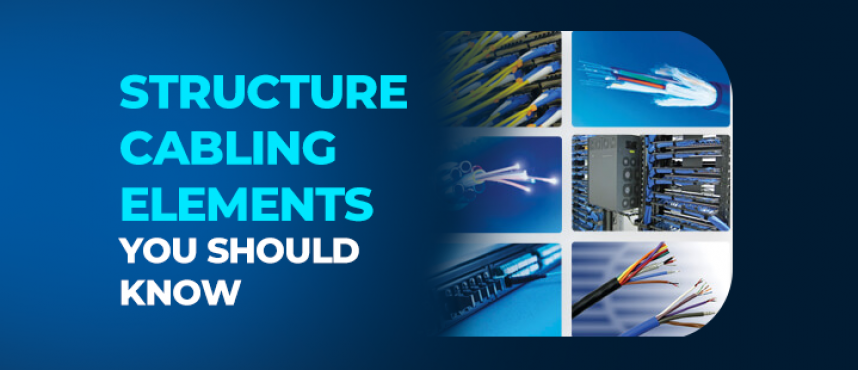Structure cabling elements you should know.
Structured cabling refers to the standardized infrastructure of cabling and connectivity hardware that provides a comprehensive telecommunications infrastructure for a building or campus.
What is structured cabling?
Structured cabling refers to the standardized infrastructure of cabling and connectivity hardware that provides a comprehensive telecommunications infrastructure for a building or campus. It involves the installation of a set of cables, wires, and related components that form the backbone of a building’s communication system, supporting data, voice, video, and other types of network traffic.
Why it is important to have structure cabling?
A well-designed structured cabling system ensures reliable and fast communication between devices, which helps to improve network performance. Structured cabling provides a flexible infrastructure that can accommodate changes and additions to the network as it grows. With a structured cabling system in place, it is easy to add new devices, move existing ones, or expand the network without disrupting the existing cabling infrastructure.
Know about major components involved in structure cabling.
To create a reliable structured cabling system, several components are required, including:
- Cables: Structured cabling requires high-quality cables that can transmit data, voice, and video signals over long distances without losing quality. The most commonly used cables are Cat 5e, Cat 6, and Cat 6a.
- Patch Panels: Patch panels are used to connect the horizontal cabling (which runs from the workstations) to the backbone cabling (which runs from the server room). They help in managing the cables, making it easier to troubleshoot any issues.
- Keystone Jacks: Keystone jacks are connectors that are used to terminate the horizontal cabling. They are available in different types, such as RJ-45 (for Ethernet connections) and RJ-11 (for telephone connections).
- Patch Cords: Patch cords are short cables that are used to connect devices to the wall outlets or patch panels. They are available in different lengths and types, such as Cat 5e, Cat 6, and Cat 6a.
- Racks and Cabinets: Racks and cabinets are used to house the networking equipment, such as switches, routers, and servers. They provide a secure and organized space for the equipment, making it easier to manage and maintain the network.
- Cable Management: Cable management is important to ensure that the cabling is organized, neat, and easy to maintain. This includes using cable ties, cable trays, and other accessories to keep the cables in place and prevent them from getting tangled.
Overall, a well-designed and installed structured cabling system can provide a reliable and scalable infrastructure that supports the needs of a modern building or campus.
Network Techlab offers a range of services for Structured cabling services and has expertise in deploying 1000+ structure cabling projects including one of the leading stock market companies in India. Click here to know more about our structure cabling service or watch video to view at a glance.[/vc_column_text][/vc_column][/vc_row]









